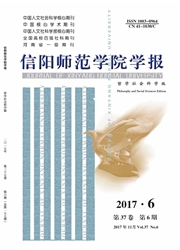

 中文摘要:
中文摘要:
马克思在《1844年经济学哲学手稿》中首次提出“异化劳动”概念,并分析了异化劳动的四个规定:劳动者同劳动产品相异化,劳动者同劳动相异化,人同自己的类本质相异化,人同人相异化。鉴于逻辑结构以及考察对象的局限性,使得对于“人与人相异化”这一规定的分析陷入逻辑矛盾中,因此马克思在深入分析资本主义社会劳动者在劳动过程中的悲惨境遇而导致的前三种异化的基础上,将研究视角转向市民社会,不再从孤立抽象的人的角度研究异化理论,而从多元主体逻辑框架分析人与人之间的交往关系,作为其批判资本主义社会剥削本质的理论依据。马克思在《穆勒评注》中用交往异化理论从主客体二元逻辑结构分析异化劳动的第四个规定,不再局限于生产过程领域,而从更广阔的现实生活领域进行分析,丰富了异化理论的内涵。同时马克思关于人的本质的结论与其成熟时期的思想交相呼应,为马克思唯物史观的建立奠定了理论基础。
 英文摘要:
英文摘要:
Marx put forward the concept of "alienated labor" at the first time in The Manuscript of Economics and Philosophy, and analyzed the tour stipulations of alienated labor: the alienation between the labor workers and their products, the alienation between the labor workers and the labor, the alienation between people and their nature, and the alienation among human. Due to the limitation of the logical structure and the objects, the analysis of "the alienation among human" was trapped into contradiction, so Marx analyzed deeply the miserable life of the labor workers who were working in the capitalism society on the basis of the last three alienations, and turned the perspective to the civil society, he didnt study the alienation theory from the perspective of the abstract person, and analyzed the relationship between people from the perspective of the logical structure of multiple subjects, it was the theoretical gist of the critics to the exploit nature of the capitalism society. In Muller commentary, Marx analyzed the forth stipulation of alienation labor with the theory of interaction alienation from the perspective of subject - object binary logical structure, he didnt limit to the areas of producing process, and expanded to the realistic life area, of course enriched the meaning of the alienation theory. Meanwhile, the conclusion of the nature of human were according to the thoughts of later period of Karl Marx, it laid the foundation of building the historical materialism of Karl Marx.
 同期刊论文项目
同期刊论文项目
 同项目期刊论文
同项目期刊论文
 期刊信息
期刊信息
